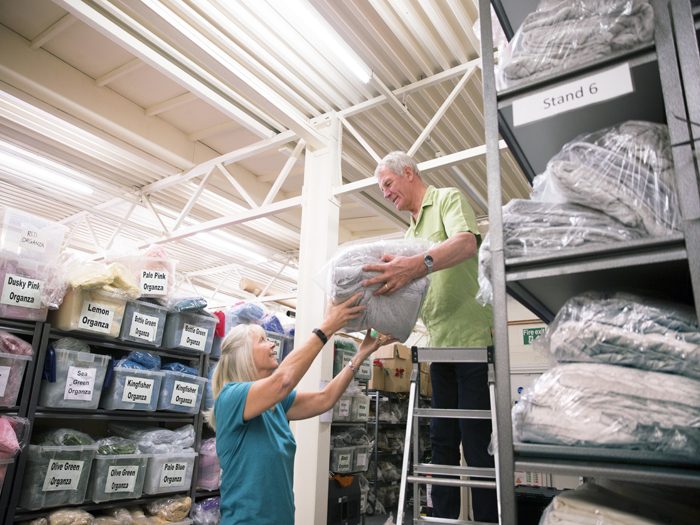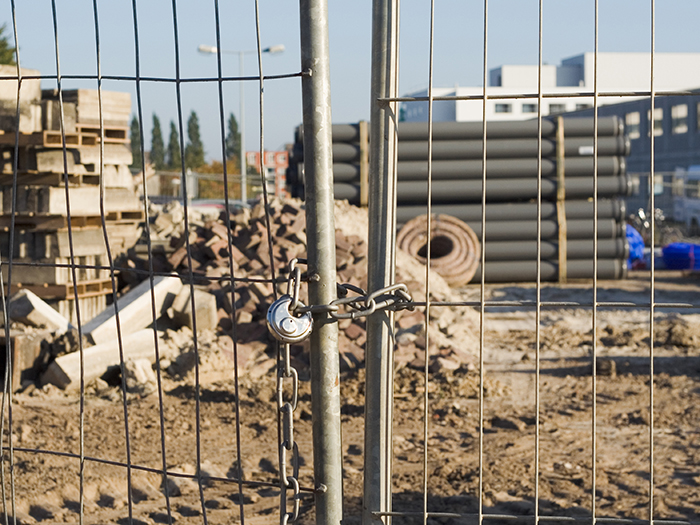AmTrust Analyzed Thousands of Retail Workers’ Comp Claims; Here’s What They Found

When you think of a trip to the mall or a weekend spent running errands, danger might not be the first thing that comes to your mind. But retail is full of safety risks.
From employees falling from a ladder while stocking shelves to tripping over merchandise that a customer abandoned in the aisle, there are plenty of ways retail employees can be injured.
In fact, so many workers have been injured in the past year that the Bureau of Labor Statistics found that retail is now more dangerous than manufacturing.
AmTrust’s 2019 Retail Risk report dives into the types and causes of workers’ comp injuries that are prominent in the retail space.
“There’s a number of key findings that came out of this report and we hope that others are able to learn from them. We learned a lot about some of the top injury types and we learned about the nature of injury and some of the body parts involved,” said Matt Zender, senior vice president workers’ compensation strategy at AmTrust.
“When you’re able to look at it over the course of thousands and thousands of claims it takes it from the anecdotal and makes it more illustrative using detailed analysis.”
The Report By the Numbers
- Lifting was the top reported injury type, according to the report. It accounted for 22% of claims and 23% of total payout for the top ten injury types.
- Additionally, lifting had the highest total payout at $22 million.
- The report also found that the top three injuries with the highest average payouts were falls from ladders or scaffolding with an average $21,000 payout; repetitive motion with a $14,000 average payout; and motor vehicle collision with a $13,900 average payout.
- Injuries that cause employees to file a lost time claim resulted in an average of 24 days out of work.
- The report found four types of businesses — meat fish and poultry retail sales, hardware stores, automobile parts and accessory stores, and beauty and hairstyling salons — were the most dangerous.
Gender and Age Divide
The report found a striking divide between the average cost of a claim for men and women working in the retail industry.
“I certainly wouldn’t have expected that the average loss and the total loss were less for women. I found that very interesting and it caused me to think about why that might be,” Zender said.
For men, the average cost of a claim totaled $11,641, while for women it was $7,030. Men also had a higher average number of lost time days — 24 compared to 22 for women — and they reported more injuries according to the report.
These findings are consistent with other reports, including from the Bureau of Labor Statistics, that have found men are more likely to be injured at work.
“Perhaps there’s some effect of women working in less hazardous positions. Of course there are women who are working much more hazardous jobs than the average man, but on average this might lead to some numbers that are demonstrative of what we saw,” Zender said.
Gender wasn’t the only factor that affected average payouts. While the report found that older workers were likely to have fewer injuries, it also found that their injuries tended to be more costly and severe. The average payout for workers over 70 was $14,408.
Preventing Injuries
The report offered several tips for retailers on how to make their businesses safer.
Making sure employees have proper safety training should be a top priority, according to Zender, especially because retail often has high turnover.
“One of the things we have found that in a lot of these businesses is that there’s a lot of turnover,” Zender said.
“When you have high turnover, it’s very important to make sure you take the time and effort to train new employees. It needs to be part of the on-boarding process.”
Some of the tips, such as keeping walking spaces free of objects that could cause someone to trip and making sure emergency exit paths are cleared at all times, may seem like common sense, but it can be difficult to make sure these standards are enforced.
“Falls and slips are definitely something that any retailer or wholesaler should be paying attention to,” Zender said.
“It’s hard to pull time out and think about safety. But if you think about some of the tips that we have outlined, a lot of them are common sense. Think about keeping areas free of all trip hazards, for example. It makes a lot of sense, but it’s hard to take that extra second to act. Maybe they think, ‘oh, I’ll pick it up later,’ and then they forget.” &











